With recent changes in education, the integration of 21st Century Learning, STEM, STEAM, Maker Spaces, and Project Based Learning – the design of High Schools and Career and Technology Schools are changing. The traditional “sage on the stage” mentality is being modified to a collaborative educational environment that encourages teacher student interaction, peer to peer interaction, individualized learning and project based learning.
For more than a hundred years, vocational education has been a pivotal part of education in the United States. However, thanks to the advent of computer technology coupled with advances in engineering, the relevance of vocational education has been superseded by new, urgent demands for specialized tech skills. Toward that end, career technical education (CTE) has taken on a whole new importance as the U.S. strives to supply new generations of tech industry workers in the global marketplace.
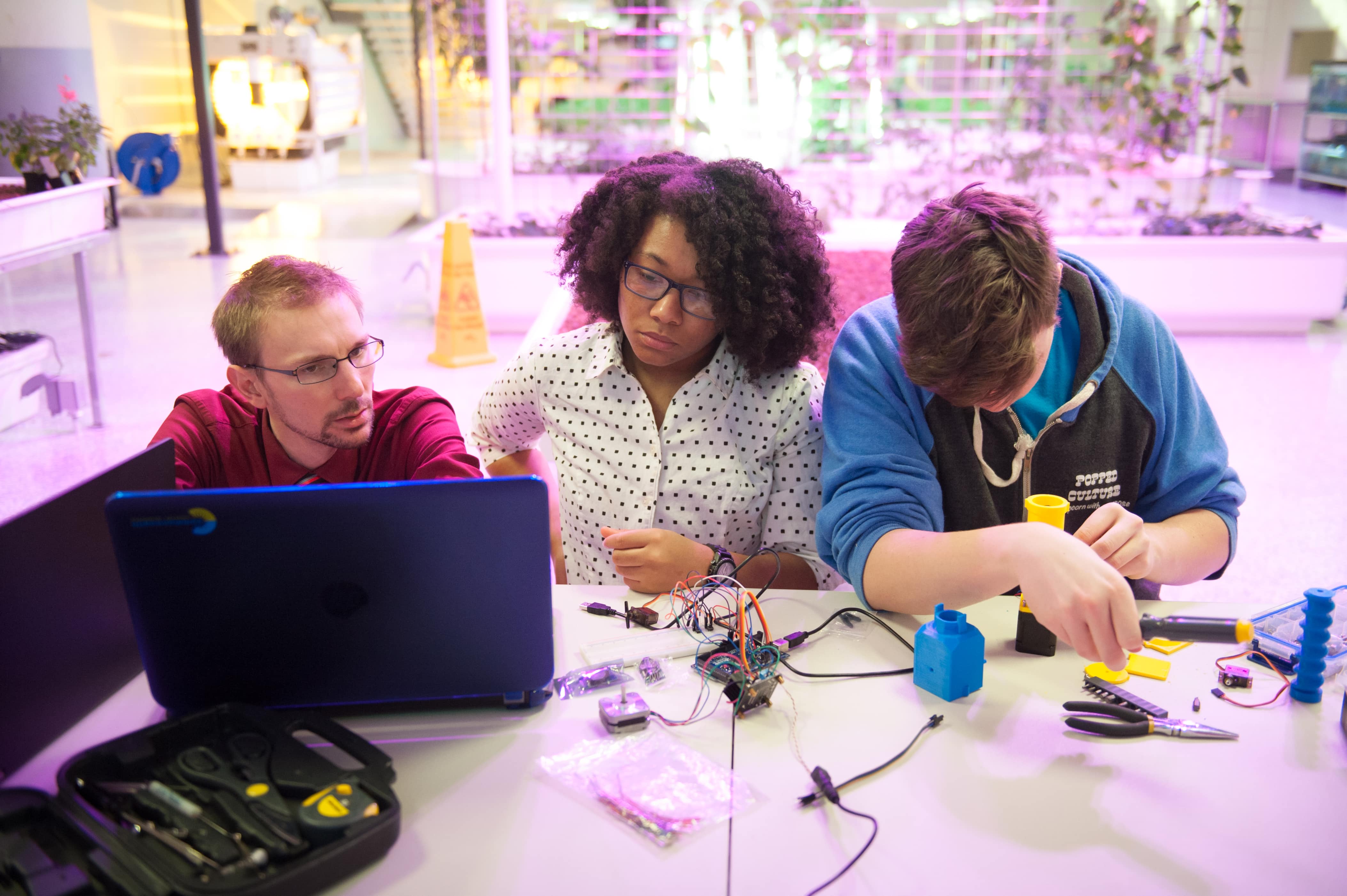
Georgetown University predicts that there will be 55 million job openings in the economy over the next three to five years: 24 million openings from newly created jobs and 31 million openings due to baby boom retirements. Georgetown and Harvard Universities predict that only 33% to 35% of those jobs will require a bachelor’s degree. While 65% will not require a bachelor’s degree, 57% of the jobs will require post-secondary training in technology, engineering, information technology and security, healthcare, advanced manufacturing, the highly skilled trades, and the like. With employers experiencing record numbers of skilled labor shortages and all indicators saying it will only be getting worse, the U.S. is experiencing a transformation in secondary curriculum and the educational spaces, technology, furniture and fixtures that support the delivery of that curriculum. The transformation is most dramatic as the nation’s traditional vocational schools are being reinvented as Career and Technology Centers.
In years past, high school vocational training conjured up images of manual labor type jobs, or careers in a small segment of industries such as agriculture or auto mechanics. However, today’s CTE courses offer an entirely different career path—one leading to better paying, highly desirable careers in skilled trades involving science, engineering, and technology. CTE students can get industry certification in a dazzling array of enticing careers ranging from marine biology and environmental science to aviation flight and operation.
Career Technical Education is now visible in almost all secondary programs through specific career pathways, academies, linked learning programs, electives classes and more. Whereas the former vocational education was hands-on, it was not necessarily steeped in the new CTE elements of career pathways, industry standards, professional advisory groups, internships, and other work-based learning. CTE is now standards-driven and working to respond to our new global economy, as well as a means of connecting students to their learning.
CTE works to engage students, create meaningful ways to build skills and learn content, and have students think about their long-term career path and educational needs.
Indeed, students in these CTE courses have higher high school graduation rates, college success rates, grade point averages, and career placement.
The design for the modern career and technical school will include these types of labs and spaces, but will also include opportunities for collaboration, research and non-traditional maker spaces.
Traditional Career and Technical Schools are blending with Magnet and Academy Schools that focus on Science and Engineering and are focused on a path to Higher Education as well as a direct path to the work forces.
Traditional Programs
Trade school graduates are in high demand. There is a drastic shortage in the construction industry as well as many other skilled trades such as electricians and welders. In 2016 the Bureau of Labor reported that 7.8 million Americans were unemployed – it also reported that there were 5.8 million available construction jobs. Career and Technology Schools are training the future leaders in these fields and there are high demands for these graduates with rewarding jobs. Career and Technology Schools need to partner with the local industry and make sure that graduates from these traditional programs are learning with the latest technology and equipment to be job ready at graduation.
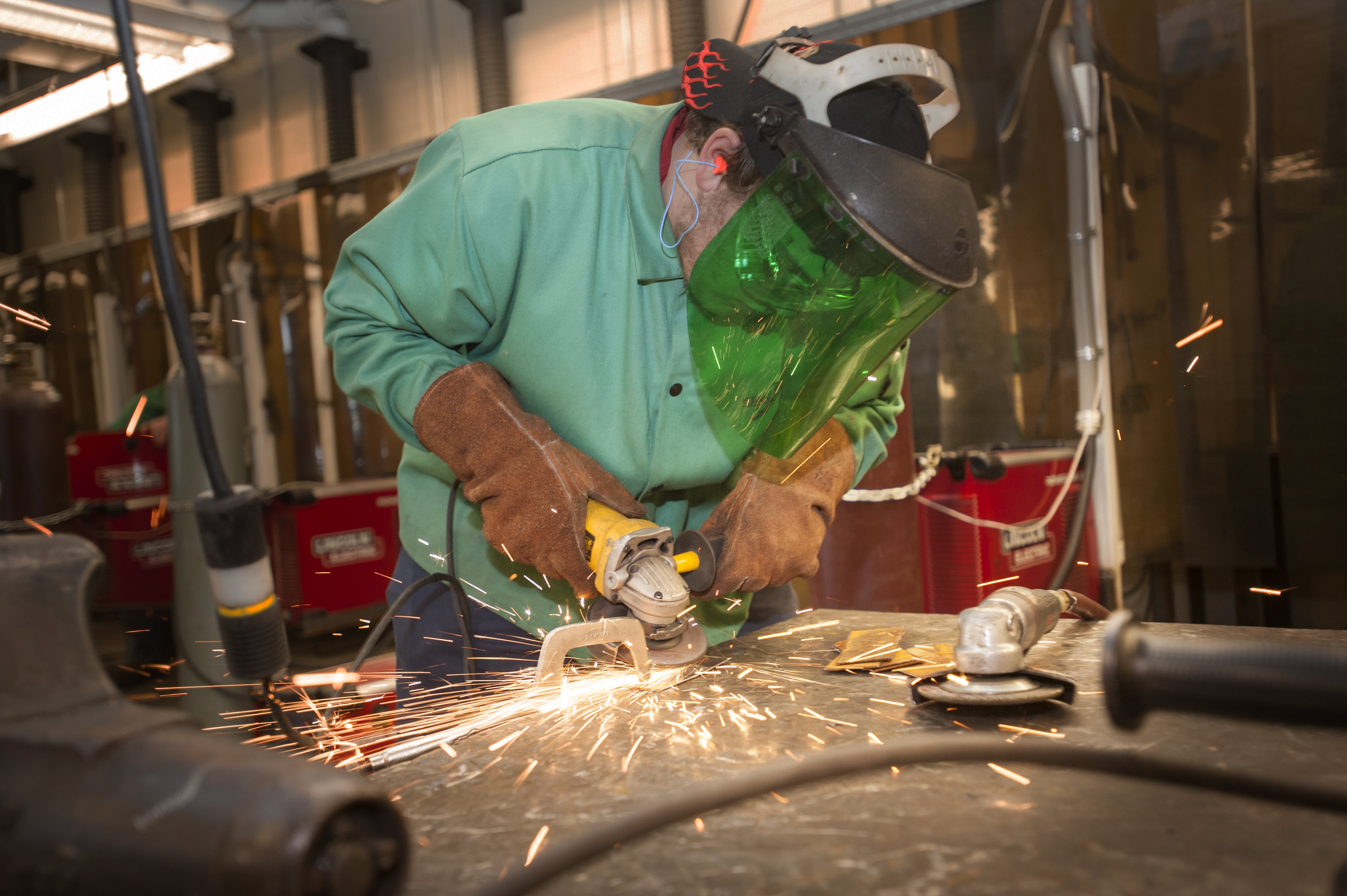 Welding Lab at Franklin County Career and Technology Center
Welding Lab at Franklin County Career and Technology Center
Allied Health Programs
The United States is projected to experience a shortage of Registered Nurses (RNs) that is expected to intensify as Baby Boomers age and the need for health care grows. Another challenge is that nursing schools across the country are struggling to expand to meet the demand for rising care. There are similar shortages across the Allied Health markets. Career and technology schools as well as colleges and universities are looking to expand their offerings through traditional and Adult Education offer these services.
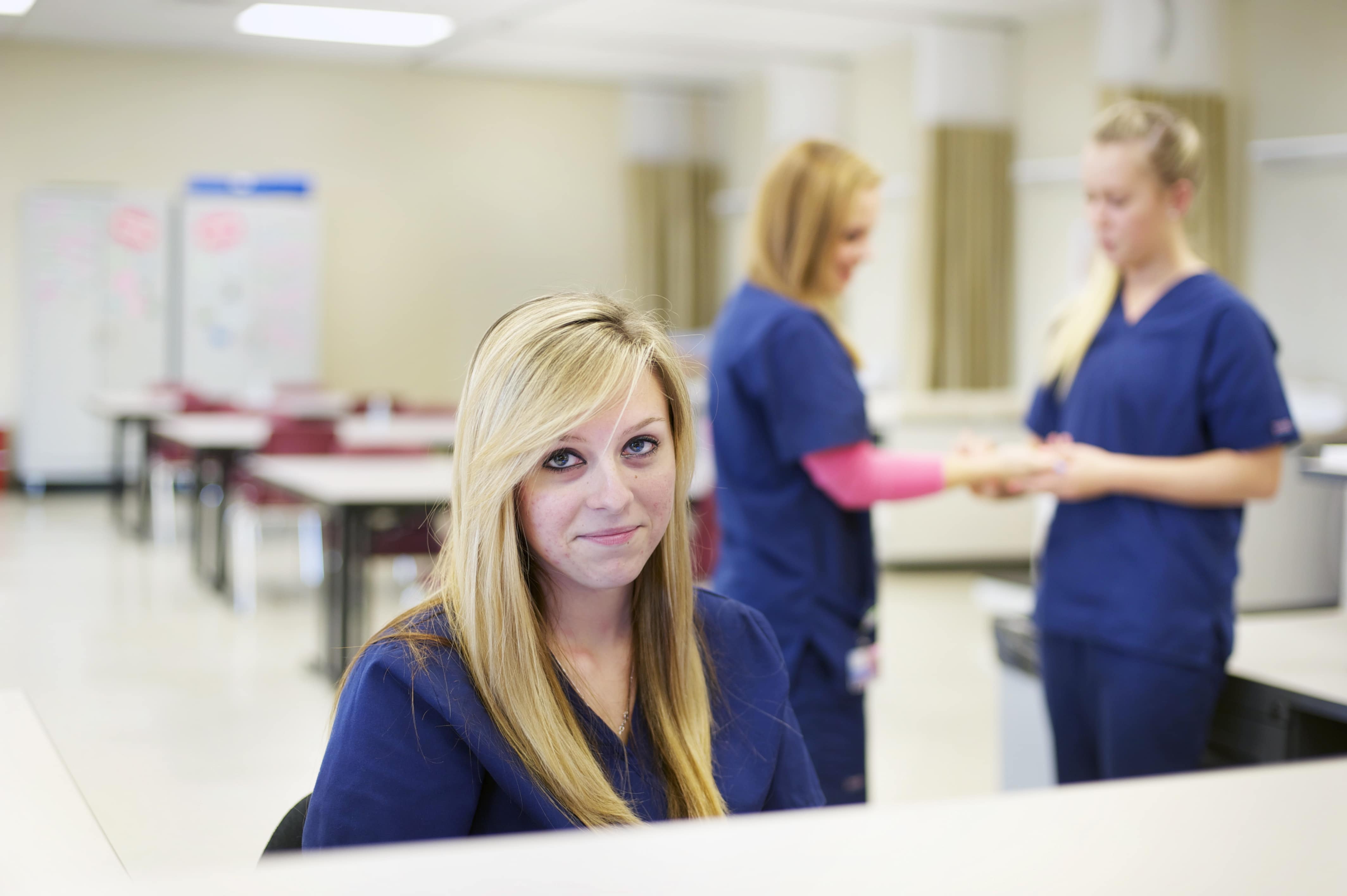
The existing space for the Health Occupations Programs at the Cumberland-Perry Area Vocational Technical School including Dental Assisting, Nursing and an Emerging Health Professional Program were separated and confined by the existing space. With the enrollment in these programs growing the school is looking to expand the footprint of the educational space. One new program is the Emerging Health Professionals Program which is a dual enrollment program in partnership with Messiah College that combines skills-based, interactive and university-level classroom learning with shadowing in a health care setting. The program is designed for high school seniors interested in the health care field and allows students the opportunity to explore careers in health care first-hand. In addition the program is designed to prepare students for post-secondary education by offering college science courses. Students spend two days a week taking college courses, two days a week in a health care setting and one day a week developing skills. Students in this program take anatomy and physiology for a total of eight college credits.
Franklin County Career and Technical School has made recent renovations to their buildings to offer expanded healthcare offerings. This includes a standalone nursing school for Adult Education. Messiah College recently completed the design of a Physical Therapy and Occupational Therapy School which focuses on a variety of Allied Health Applications. As the needs continue to increase, schools will need to change and provide these new offerings.
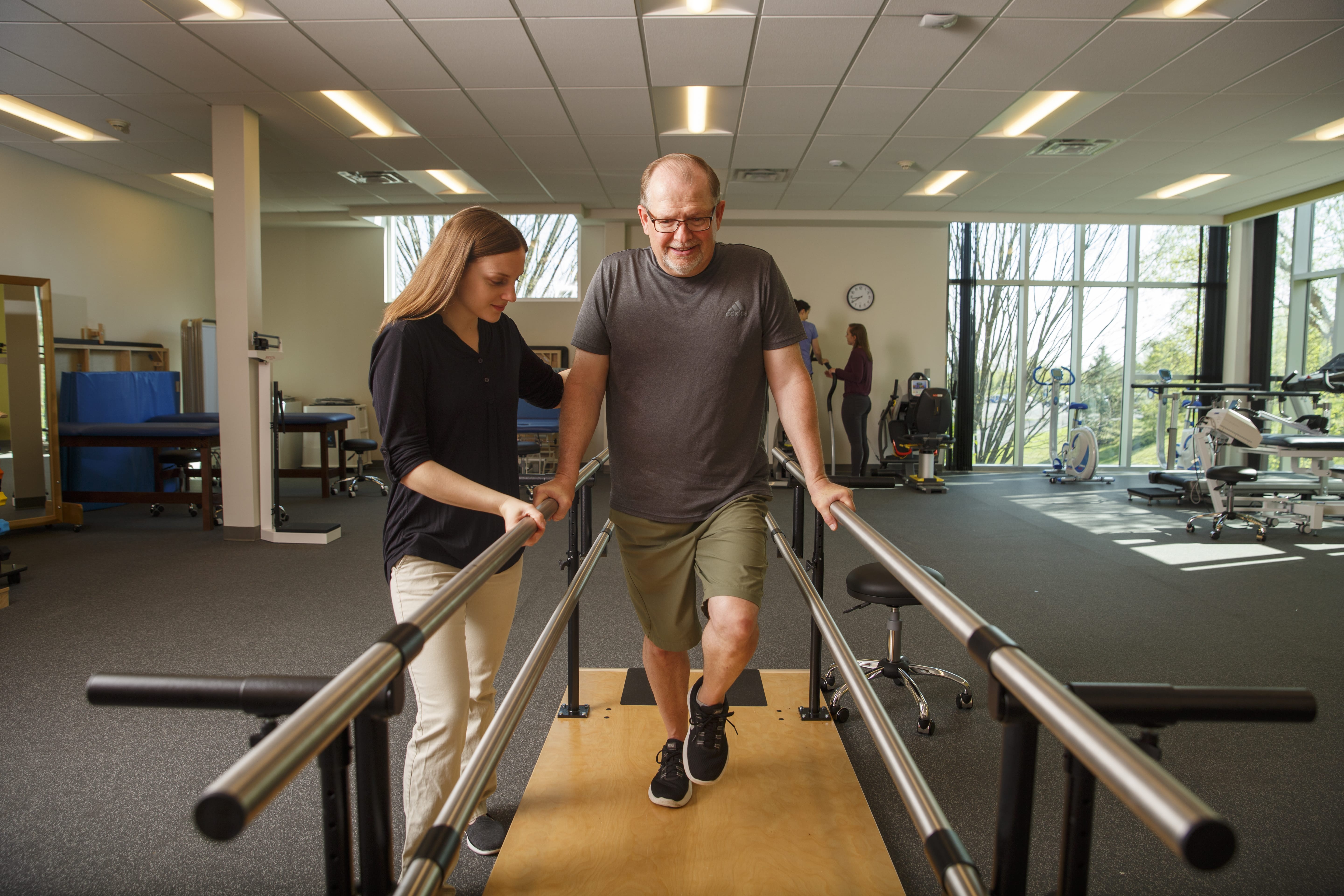 Messiah College Physical Therapy and Occupational Therapy School
Messiah College Physical Therapy and Occupational Therapy School
Hazleton Academy of Sciences
The Hazleton Academy of Sciences is a STEM Magnet School located in the Hazleton Area School District. The school was the adaptive-reuse of a vacant office building into the new school. The building offers a blend of traditional learning environments along with high tech learning opportunities in the sciences and engineering. The school uses a rotational learning model where there is a more traditional classroom which serves as the center of the learning environment, directly adjacent and separated by a folding partition is a laboratory classroom. There is a small group instruction room attached to the Classroom and right outside of the classroom is an open collaboration spaces for students to participate in individualized learning and a “genius bar” which integrated technology. One teacher can supervise all of these spaces from the classroom. These educational clusters are located in each corner of the building and they specialize from traditional learning.
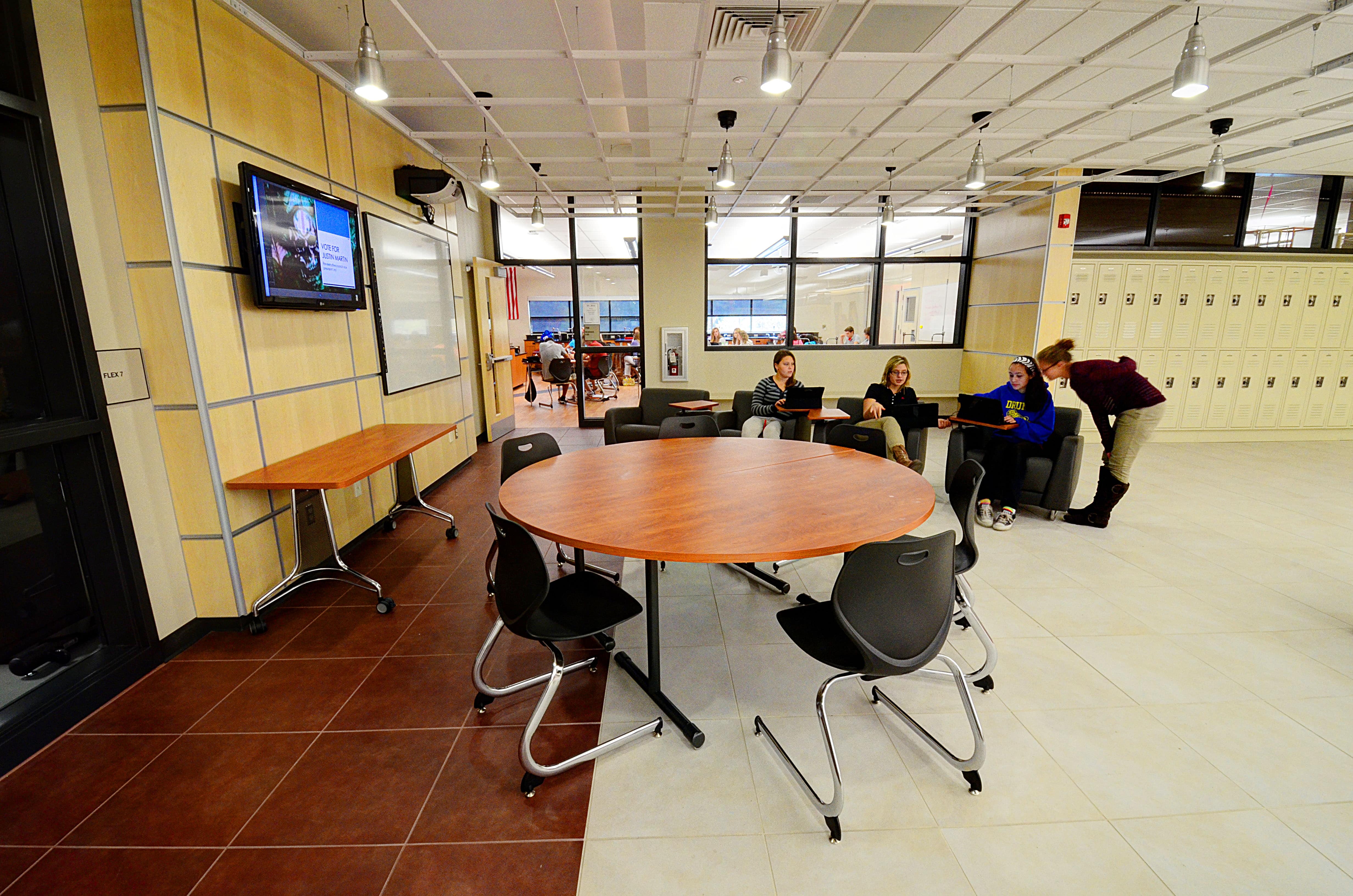
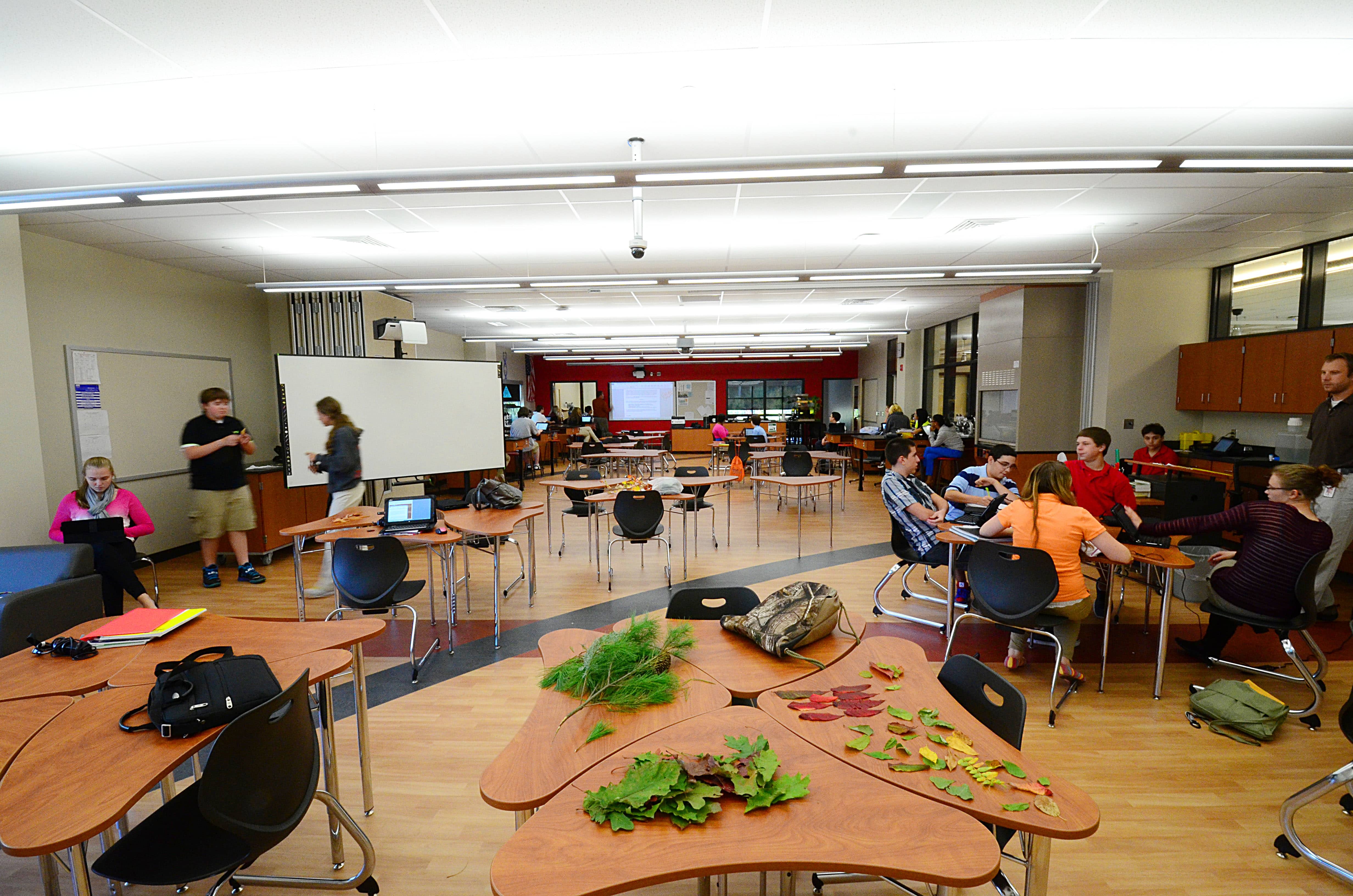
Commonwealth Connections – Agworks
The new AgWorks facility at CCA’s Capital Campus is a 6,100 square-foot Aquaponics learning center and laboratory which is constructed in one of the atriums of the former PSECU Headquarters building. The Headquarters building was selected by Commonwealth Charter Academy (CCA) for an adaptive reuse project to convert the vacant headquarters building into their new headquarters office and educational center.
The new facility is the largest known public educational aquaponics facility in the country. The facility was funded by a federal grant and designed by the Harrisburg based Integrated Agriculture Systems (INTAG) in conjunction with Crabtree, Rohrbaugh & Associates. Aquaponics is a symbiotic system where microbial life converts waste products of fish and other aquatic life into fertilizer for plants which are grown in water rather than soil. This all functions in a controlled indoor ecosystem where no pesticides are used.
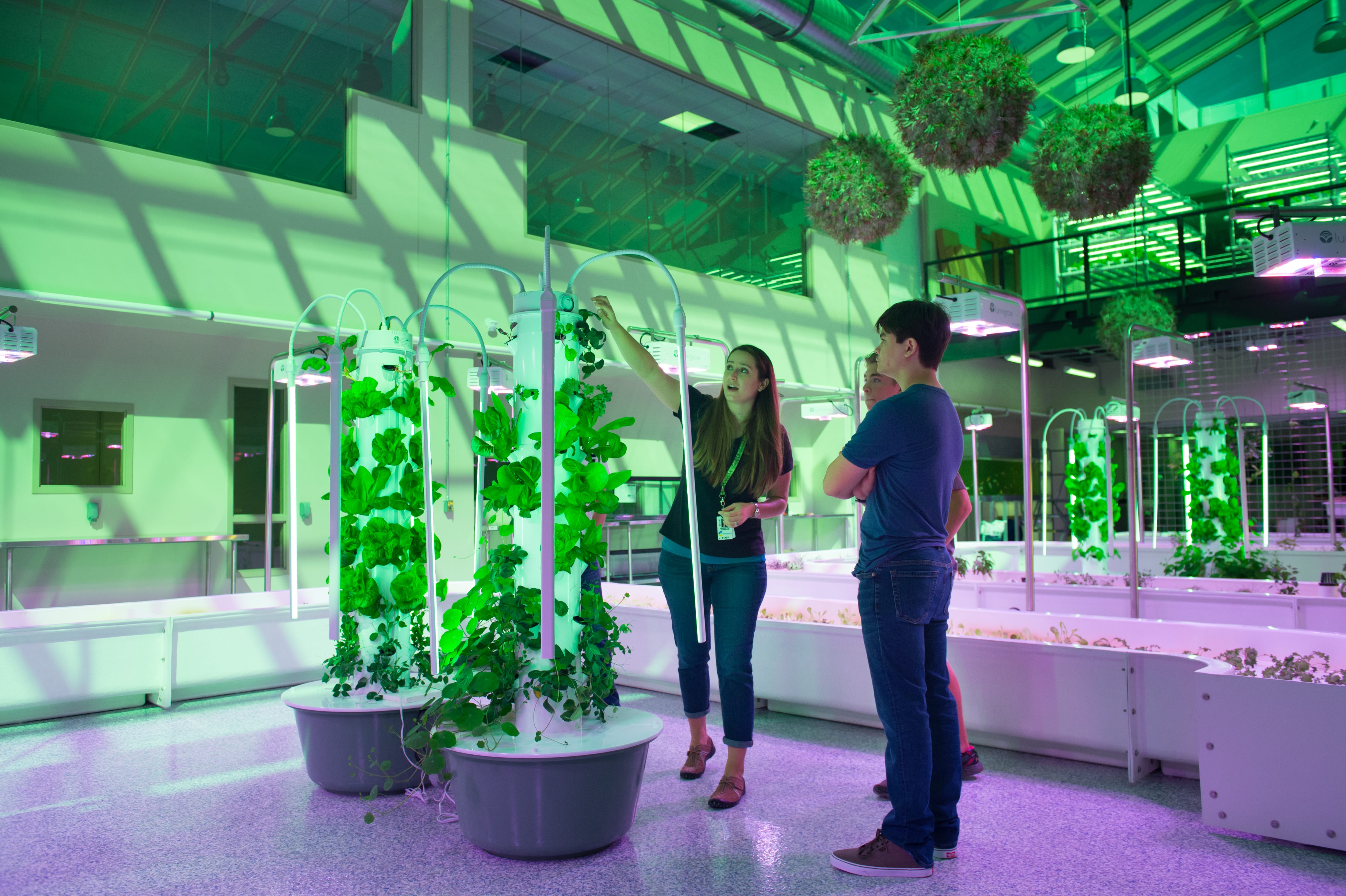
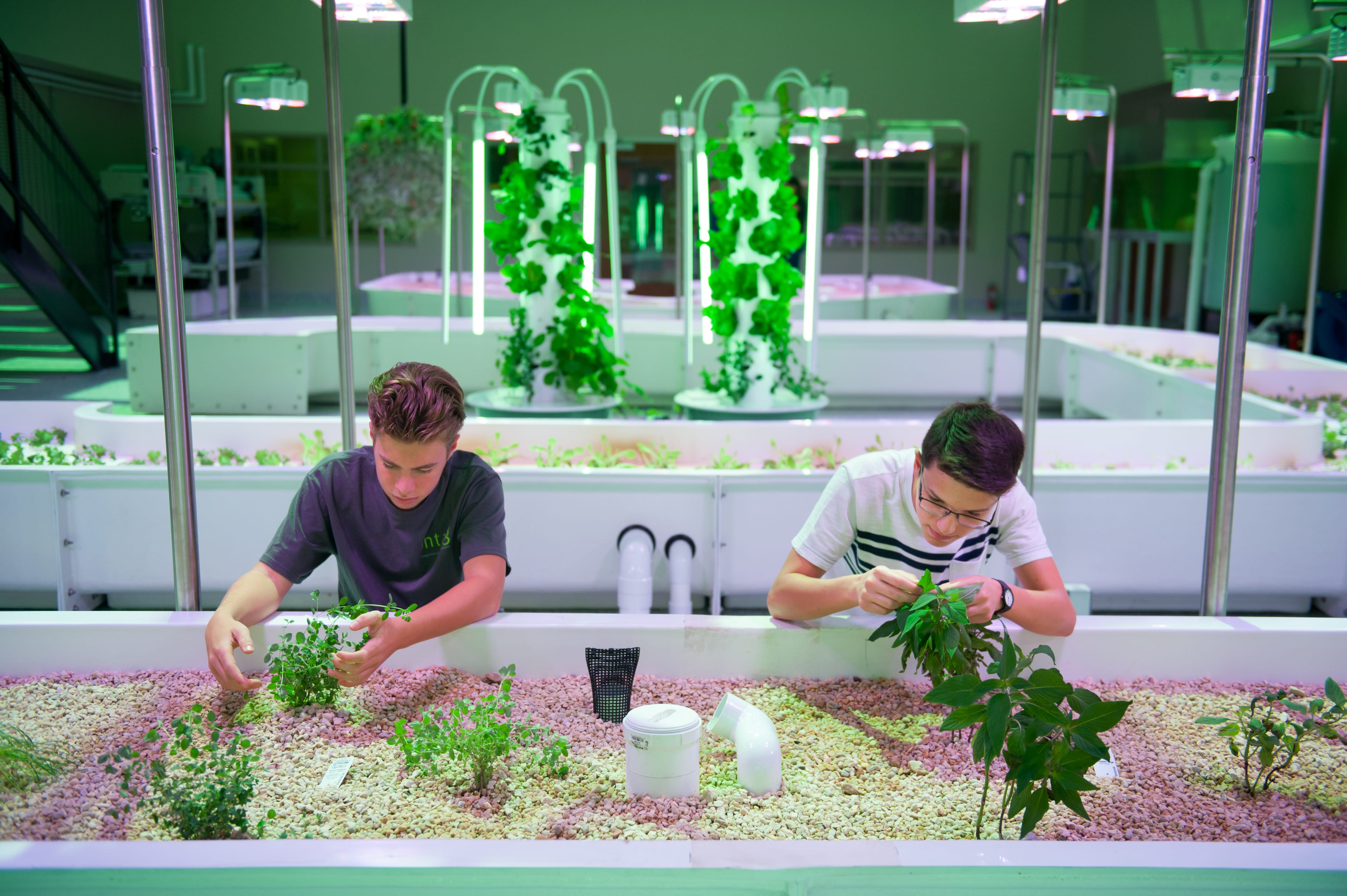
The research facility will grow approximately 3,000 plants and trees and house more than 400 tilapia, koi and prawn. The students are provided with a hands on learning opportunities and manage the aquatics population, plant the vegetables and trees, monitor their growth, and ultimately harvest the products for use at local restaurants. There is tremendous opportunity with this integrated curriculum to cater the new trends in Science, Engineering, and Agricultural fields.
Summary
As the needs in workforce continue to change, the education that is being offered needs to change with it. We are educating our students for jobs that may not exist when they graduate. We need to focus on providing these students with an education that focuses on collaboration, problem solving and developing students with the knowledge to be job ready.




